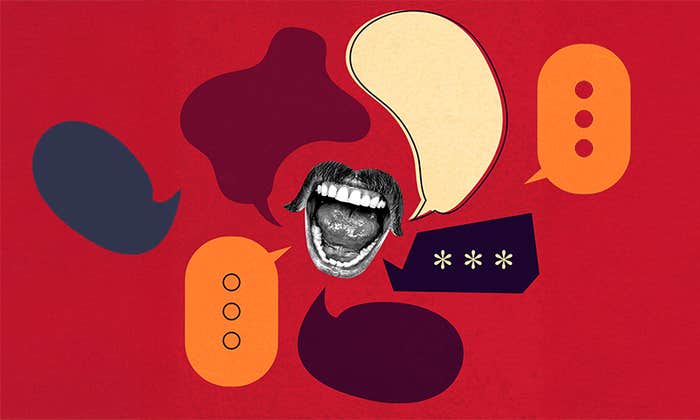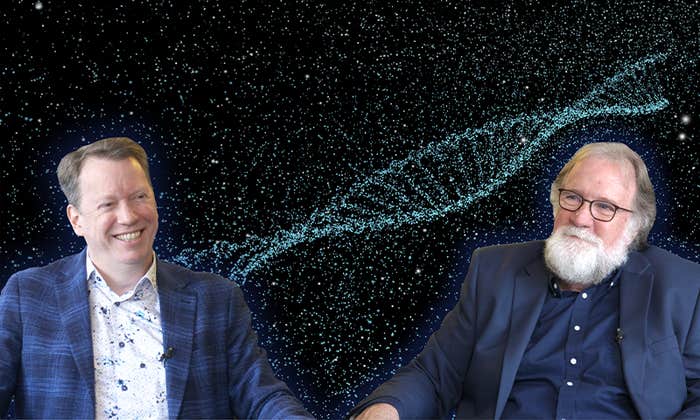If you dropped a dozen human toddlers on a beautiful Polynesian island with shelter and enough to eat, but no computers, no cell phones, and no metal tools, would they grow up to be like humans we recognize or like other primates? Would they invent language? Without the magic sauce of culture and technology, would humans be that different from chimpanzees?
Nobody knows. (Ethics bars the toddler test.) Since the early 1970s, scientists across the biological sciences keep stumbling on the same hint over and over again: we’re different but not nearly as different as we thought. Neuroscientists, geneticists, and anthropologists have all given the question of human uniqueness a go, seeking special brain regions, unique genes, and human-specific behaviors, and, instead, finding more evidence for common threads across species.
This year President Obama pledged $100 million to the Brain Research through Advancing Innovative Neurotechnologies (BRAIN) Initiative, and the European Commission committed one billion euros ($1.29 billion) to the Human Brain Project. The ambitious projects aim to map the circuitry and functions of the brain, and may help us better understand what makes us human. But so far science has found only the tiniest clues.
As someone who has studied language, cognitive neuroscience, and human evolution, I say that with a tinge of chagrin; my professional career has been about trying to understand the origins and development of the human mind. My colleagues and I are all still struggling to find the answers. Why has pinpointing the origins of human uniqueness proven so difficult?
In the old days, the main hypotheses were behavioral. “Humans are the only animals to use tools.” “Humans are the only animals to have culture.” “Humans are the only animals to teach their young.” But over time most of those guesses have turned out to be wrong. It’s become even more mysterious because almost everything we have found points in the opposite direction, toward what biologists call conservation—evolution’s tendency to use many of the same genes, neurotransmitters, and brain circuits, over and over again.
Why has pinpointing the origins of human uniqueness proven so difficult?
Consider, for example, the overall anatomy of the brain. As many people know, the human brain is divided into two hemispheres, left and right. Same for the chimpanzee. How about division into frontal, temporal, parietal, and occipital lobes? Yep, chimpanzees have that too. And so, for that matter, do horses, cats, and squirrels. The basic organization of the brain is something we share with all mammals. Could it be that which distinguishes us is the six-layer sheet that defines the wrinkly outer portion of the brain called the neocortex? Nope, chimps (and other mammals) have that too. How about Broca’s area, the part of the brain most associated with language? This, too, has a counterpart in the chimpanzee brain. Meanwhile, the organization of the human brain turns out to be far more complex than many anticipated; almost anything you might have read about brain organization a couple decades ago turns out to be radically oversimplified. Broca’s area, for instance, participates in language, just as everybody imagined, but it’s also used for muscle control, music, and perhaps even imitation. In fact, lots of other parts of the brain, like the prefrontal cortex and even the cerebellum play important roles in language. Language isn’t something that resides in a tiny, well-defined corner of the brain, but something distributed across a great deal of the brain.
To add to the challenge, brain regions don’t wear name tags (“Hello, I am Broca”), and instead their nature and boundaries must be deduced based on a host of factors such as physical landmarks (such as the hills and valleys of folded cortical tissue), the shapes of their neurons, and the ways in which they respond to different chemical stains. Even with the most advanced technologies, it’s a tough business, sort of like trying to tell whether you are in Baltimore or Philadelphia by looking out the window of a moving train. Because the two cities were built out of similar raw materials over a similar time period, many of their parts look superficially similar. All of the neocortex (the part of the brain that only mammals have) is a six-layered sheet, so different areas of the outer brain (which makes up most of the brain’s volume) wind up looking more similar than different. Even under a microscope human brain tissue looks an awful lot like primate brain tissue. We have gone from expecting (but not finding) human-specific brain regions to searching for second-order differences. We ask questions like, “Might there be a greater degree of asymmetry between the left hemisphere and right hemisphere in human beings than chimpanzees in a part of the brain known as the planum temporale?” That’s sort of like saying that New York is different from Paris because we have more water towers on the roof. It might be true, but it’s not really getting at why the two cities feel so different.
When we look at our genomes, the situation is no different. Back in the early 1970s, Mary-Claire King discovered that if you compared human and chimpanzee DNA, they were so similar that they must have been nearly identical to begin with. Now that our genomes have actually been sequenced, we know that King, who worked without the benefit of modern genomic equipment, was essentially right. Nearly every gene in the human genome has a counterpart in the chimpanzee genome, and vice versa. Even one look at the individual letters (nucleotides) reveals that our genomes are shockingly similar. Virtually every gene in our genomes—from genes for dopamine and serotonin to genes like BDNF and COMT that contribute to memory control—has a counterpart in the chimpanzee genome. And that’s true even for the gene FOXP2, that has been decisively linked to human language. Of the 715 amino acids that correspond to the part of the FOXP2 gene that codes for a protein, only two differ between human and chimpanzee versions. As of early 2013, we still don’t know which genes are vital to making us differ from chimpanzees. But we do know that genetically we are far more similar than different.

Why, if our lives are so different, is our biology so similar? The first part of the answer is obvious: human beings and chimpanzees diverged from a common ancestor only 4 to 7 million years ago. Every bit of long evolutionary history before then—150 million previous years or so as mammals, a few billion as single-celled organisms—is shared. Seven million years is fairly short by the yardstick of evolutionary change.
The second part of the answer develops from the first, and lies in the dynamics of how evolutionary change works. In principle, when an engineer builds something new, he or she has the luxury of starting from scratch, perhaps substituting a new material, like steel, for an older material, like wood, or replacing a gasoline-powered engine with an electric one—wholesale changes that can lead to radical improvements.
Evolution never has that luxury. It can’t simply take a species offline while it waits to release Humans 2.0. Instead, each new development builds on top of ancestral forms; in the immortal words of the great biologist François Jacob, evolution is like “a tinkerer who does not know exactly what he is going to produce but uses whatever he finds around him whether it be pieces of string, fragments of wood, or old cardboards; in short it works like a tinkerer who uses everything at his disposal to produce some kind of workable object.” A human brain is a primate brain, tweaked. Not something wholly new, developed from scratch to fit the needs of our particular lifestyle.
In short, humans may live very differently than chimpanzees, but the structural plans of our biology necessarily can represent only modest tinkerings to the genetic material that we inherited from our last common ancestors. Language, regardless of how it is instantiated in our brain, represents a comparatively tiny cognitive enhancement relative to the mental machinery we inherited from our last common ancestor. The same is true for the underlying biology of each of our cognitive innovations.
If it seems like scientists trying to find the basis of human uniqueness in the brain are looking for a neural needle in a haystack, it’s because they are. Whatever makes us different is built on the bedrock of a billion years of common ancestry. Humans will never abandon the quest to prove that they are special. But nor can we escape the fact that our minds are a modest tweak on an ancient plan that originated millions of years before we came onto the scene.
Gary Marcus is a professor of psychology at NYU. His books include Guitar Zero and Kluge: The Haphazard Evolution of The Human Mind. His essays have appeared in Wired, Discover, The Wall Street Journal, and The New York Times. He blogs on science for The New Yorker.


























